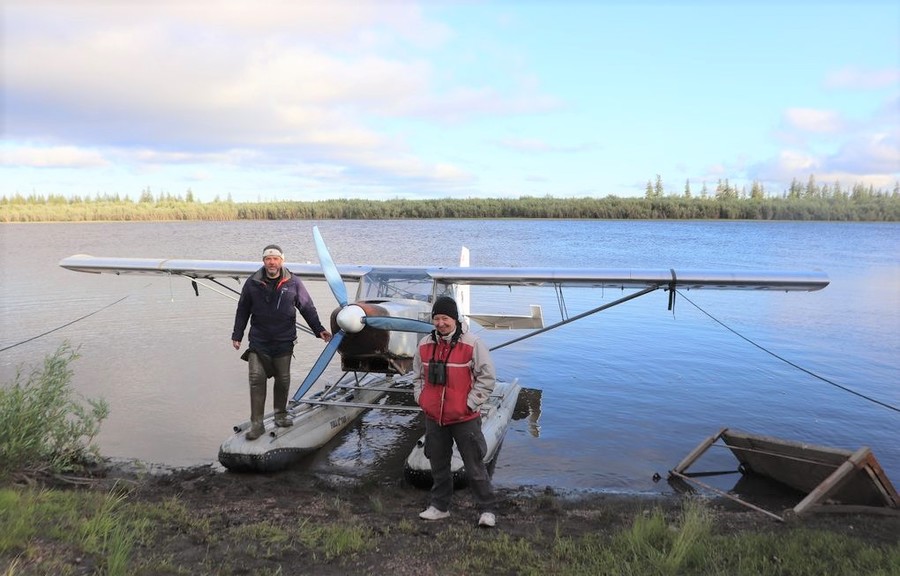
Well-known Russian ornithologist, researcher at the A.N.Severtsov Institute of Ecology and Evolution RAS, candidate of biological sciences Sophia Rosenfeld worked for a week in the Nizhnekolymsky region of Yakutia. Together with the pilot Georgy Kirtaev on a small amphibious aircraft, they were engaged in aerial survey of geese. Journalist Alexei Kurilo interviewed her for the SakhaNews news agency, and this is what Sofya Borisovna reported:
- There are many hunters in Yakutia, and they think this way: the birds flew by, we shot them, and they flew away somewhere. Where did they go? How many are there? Global trends are such that migratory birds do not belong to any country. They are not yours, they are not ours, they don’t belong to any of the continents. They hibernate in one country, fly through many countries, breed in Yakutia. And if for moose, wild boars, and some large mammals there are some quotas, there are some accounts, then the matter is much more complicated with migratory birds.
We are asked the question: how do you count them? Here international cooperation is already necessary: birds do not recognize borders and do not understand political relations between countries. And it turns out that we do not know much. We do not have any accounting, monitoring. In all large countries of the world, more or less developed, there are accounts of the birds, and we are just beginning to approach this topic. And we are now trying to introduce aerial surveys of waterfowl, as well as cranes, owls, and large Arctic birds.
The last time an aerial survey of birds in Yakutia was carried out was 30 years ago, and it was the Academy of Sciences that engaged in it. And we are now repeating those routes. After carrying out this work, we find out whether there are more or less birds, what new species have come to this territory, which ones have left; after the assessment of what happened to them in 30 years, some might be endangered and require protection.

Taking this opportunity, I would like to remind you that a new edition of the Red Book of the Russian Federation has recently been published, registering new species of birds, hunting which has become a criminal liability - spectacled eider, Siberian eider, forest goose. Nobody knows about this. You come to the village, people have refrigerators full of game from the Red Book. The people just don't know about the changes. And it is where sensitization should be carried out. It turns out that everyone knows about polar bears, everyone knows about tigers, everyone knows about Siberian Cranes, but no one knows anything about geese and ducks. We need to fill this gap and spread the knowledge within the population.

Of course, now we are using new accounting models, new methods. For example, 30 years ago there was no GPS system that we now use. Previously, everything was calculated using maps and rulers. Now we have other aircrafts and other data processing technologies.
We fly along certain routes, take pictures or record the coordinates of each oncoming bird, whether it is a female or a male, a single bird or a flock. All this happens at an altitude of 38 meters (this is the standard height for counting waterfowl, the speed should not be higher than 160 km / h, but in fact the speed is lower - somewhere around 120 km / h. We take the pictures with a camera with a built-in GPS.

And then we have a lot of work processing the received data. We have our own methodology by which we work. After processing the received data, we consult with colleagues from other countries, in case they have additional information. In general, the program of work in the Nizhnekolymsk region was fulfilled. Now we are heading west to Yana.
Unfortunately, from all countries where these birds spend winters, we receive information about a progressive decline in numbers. Why and for what reason - it is necessary to find out. By the very fact of our work, we draw attention to this problem and say: do not go out in spring and shoot at everything that moves!

… Pilot Georgy Kirtaev has been flying with Sophia Rosenfeld for more than ten years. He is an experienced aviation specialist and arctic flight conditions are normal for him. The capabilities of his aircraft allow taking off and landing on almost any water surface, although, of course, waves and strong winds are not welcome. The plane is specially made to fly with at the same speed as the birds.
